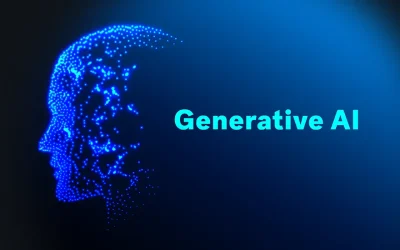In the world of data science and artificial intelligence (AI), statistical techniques such as mean or averages often dominate the landscape of decision-making. Whether predicting sales trends, diagnosing illnesses, or crafting personalized recommendations, the mean has been a reliable statistical tool. However, focusing solely on averages can lead to oversimplified insights and missed opportunities. The mean score often does not represent the bulk of participant’s responses, which may be skewed, kurtotic, or bimodal. To make smarter predictive decisions, we must harness the power of variability while predictive modeling and not depend solely on the mean.
Before getting into the topic let’s understand the role of mean and variability in AI models:
How mean and variability is used in modeling?
The mean is used in predictive models as a simple statistical measure to summarize data. It’s the central point around which the data is distributed and can be used in feature scaling or normalization techniques. In many predictive algorithms like linear regression, the mean helps in understanding relationships between variables and estimating the expected output for a given input.
Also, the mean can be used as a reference point to detect anomalies or outliers and is used to calculate the average error in model predictions (like Mean Absolute Error or Mean Squared Error) to measure model performance. It is also used in ensemble methods like bagging or boosting and mean absolute percentage error (MAPE) to summarize model accuracy. On the other hand,
Variability means dispersion in the data in the form of outliers, missing values, and randomness which leads to overfitting and poor model performance. Variability in smarter predictive decisions refers to the differences in prediction outcomes that can occur due to changes in input data, model parameters, and external conditions. Several factors contribute to variability in predictive models such as data quality, sample size, algorithm choice, tuning, etc.
Why Focusing on Mean Alone is Limiting:
Many traditional predictive models rely on central tendency metrics (like the mean) to analyze data. This approach often overlooks crucial aspects of variability within the data, such as outliers, distribution shapes, and the spread of values (dispersions). It leads to oversimplified models that fail to capture complex, real-world dynamics.
For example: In personalized medicine averaging patient responses can hide important differences, resulting in insufficient care. In customer segmentation Mean purchase values may overlook important distinctions between occasional and regular customers.
Bias variance trade-off:
Variance measures how much the predictions of a model fluctuate when it is exposed to different subsets of data. High variance indicates that the model is overly sensitive to the specific data it was trained on, leading to predictions that can swing dramatically based on minor changes in the input. This is often a symptom of overfitting, where the model learns not only the signal present in the training data but also the noise.
On the other hand, a model with high variance pays too much attention to the training data, capturing the noise and fluctuations, ultimately leading to poor performance on test data. Understanding the balance between these aspects is vital to developing a predictive model that generalizes well across different datasets.
What is Predictive Modeling?
Predictive modeling is a statistical or machine learning process used to create models that forecast future outcomes based on historical data. These models use patterns found in the data to predict unknown values or trends. It’s widely used in fields like healthcare, finance, retail, and more.
Harnessing Variability Techniques to Enhance Predictive Decisions
By harnessing variability and not focusing just on the mean we can enhance a smarter predictive model that will lead to more robust and insightful predictions. Several strategies to harness variability are:
1-Utilize Variability in Feature Engineering:
Include Features Based on Variability. Instead of using a feature’s average, consider using its variance or standard deviation as additional features. This provides information about the spread of the data, which can be valuable for predicting outcomes. Apply transformations to create new features that capture variability, such as calculating the range, interquartile range (IQR), coefficient of variation or actual deviations from the mean.
Example: Adding variability metrics to customer purchase data improves segmentation models.
2- Use Variability for Model Selection and Evaluation:
Consider performance metrics that reflect variability, such as standard deviation of predictions or prediction intervals, rather than just mean squared error (MSE) or mean absolute error (MAE). This helps assess how well the model captures uncertainty. Examine residuals (the differences between predicted and actual values) to understand patterns, trends, and variations that the model isn’t capturing. This can indicate where improvements are needed
Utilize cross-validation techniques to assess model performance across different subsets of the data, providing insights into how variability affects generalization.
3- Leverage Ensemble Methods (e.g., Random Forest, Gradient Boosting):
Use ensemble methods that combine multiple models. For instance, bagging reduces variance by averaging predictions from multiple models and boosting that highlights different areas of the data based on where variability exists. These methods aggregate predictions from multiple models to interpret for variability and reduce bias.
For example: Customer churn prediction where individual behaviors vary widely.
4- Explore Clustering Techniques(Cross-validation):
Clustering techniques that divide data into groups according to variability, such as hierarchical clustering or K-means. Following that, distinct models can be created for every cluster, allowing customized predictions that consider data variance. Experiment with non-linear models (like decision trees, random forests, or neural networks) that can capture complex relationships and variations in the data, rather than assuming a linear relationship centered around the mean.
5- Incorporate Domain Knowledge:
Collaborate with specialists in the field to interpret variability. It encompasses the practical, contextual, and technical insights that guide data interpretation, feature selection, and model evaluation. Without domain knowledge, predictive models risk becoming “black boxes” that provide mathematically sound but contextually irrelevant results. For example. A large variation in heart rate data, could be a sign of stress or equipment failure.
6- Adaptive Learning Models:
Use models that continuously learn from data and adapt to changes in variability and deviations. (e.g., reinforcement learning). Adaptive learning models are a subset of machine learning systems designed to adjust and evolve their behavior dynamically as new data becomes available. These models are particularly effective in scenarios where variability is high or data patterns change over time, such as e-commerce, financial markets, or personalized recommendations
Example: Dynamic pricing strategies in e-commerce that adjust based on demand variability.
Some other useful techniques included for harnessing variability are :
Quantile Regression:
This approach helps model various quantiles of the target variable, allowing for a deeper understanding of its distribution beyond central tendencies.
Extreme Value Theory (EVT)
This statistical approach focuses on predicting the behavior of extreme deviations (maxima or minima) from the mean in datasets, particularly relevant in fields like finance and environmental science.
Functional Data Analysis (FDA)
FDA deals with data that can be considered as functions rather than finite-dimensional vectors. It allows for capturing variability in curves or shapes over a continuum. Widely used in disciplines such as medicine (e.g., monitoring growth curves) and finance (e.g., analyzing stock price paths).
Bayesian decision making
The process in which a decision is made based on the probability of a successful outcome, where this probability is informed by both prior information and new evidence that the decision-maker obtains providing probabilistic outcomes rather than deterministic ones.
Example: Predicting sales in markets with fluctuating demand.
Dynamic Time Warping (DTW):
Useful for time-series data to measure similarities between temporal patterns, even if they vary in time or speed.
Example: Monitoring variability in sensor data for predictive maintenance.
Some of the techniques which help to go beyond mean are:
Structural equation modeling:
A statistical method called structural equation modeling (SEM) enables researchers to examine complicated relationships between latent and observable variables. By combining multiple regression and component analysis, it makes it possible to ezxamine both direct and indirect interactions between variables within a theoretical framework. SEM is frequently used for model evaluation and hypothesis testing in the social sciences, psychology, and business research.
Mixture Modeling:
A statistical method for illustrating the existence of subpopulations within a larger population, particularly in cases where the data is heterogeneous, is mixture modeling. It makes the assumption that the data may be represented as a combination of many distributions, frequently using techniques such as Gaussian mixture models (GMM) to identify individual categories in the data according to observed variables.
Multivariate analysis(MVA):
A effective statistical technique (MVA) looks at several factors to determine how they affect a particular result. This method is essential for analyzing complex data sets and finding hidden patterns in a variety of industries, including marketing, healthcare, and weather forecasting.
Decision-making in data-driven sectors is improved by MVA, which offers deeper insights and more precise forecasts by simultaneously examining the correlations between several factors.
Conclusion
Predictive modeling becomes significantly more powerful when variability is considered alongside mean-based techniques. By leveraging variability-focused techniques like quantile regression, Bayesian inference, and ensemble methods, you can enhance your model’s robustness, adaptability, and accuracy. . By harnessing variability, data scientists can uncover deeper insights and make smarter predictive decisions.



